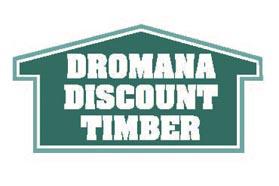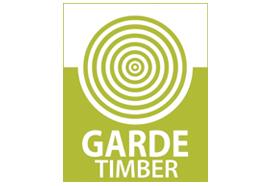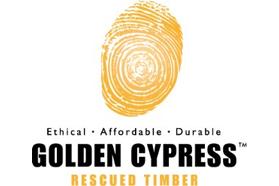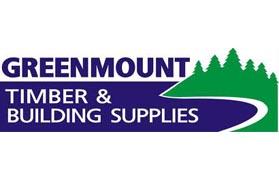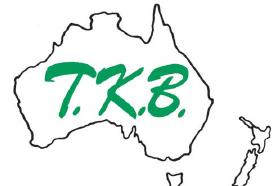WOODEN PACKAGING: LOADS OF ADVANTAGES
From pallets to customised packing solutions, timber is a highly flexible, efficient packaging material that delivers value, performance and environmental benefits. As packaging usually uses lower grades of timber, it also optimises log utilisation. Wood consistently delivers value across the supply chain.
Environmental benefits
Similarly to choosing wood in other applications, using wood packaging can reduce your organisation’s carbon footprint. Wood packaging has two main environmental advantages.
Low embodied energy
The first is that it has low levels of embodied energy, a measure of the man-made energy (usually in the form of fossil fuels) that has been used in its manufacture and transport it to its place of first use.
Lower embodied energy is associated with reduced greenhouse gas emissions and lower energy costs.
Carbon storage
Up to half the dry weight of wood is carbon, removed, as CO2, from the atmosphere and stored for life by a growing tree. The carbon stored, or sequestered, in wood packaging is stored there indefinitely - until the wood is burnt or rots.
Reuse and recycling
Pallets
The average life of a pallet is approximately ten years. During that time they may be repaired or refurbished more than once. A similar process applies to other wooden packaging, including crates, cases, boxes, bins and cable reels.
Once it is no longer vilable to reuse wooden packaging it can be recycled into a whole range of different products or used as bio energy.
Options for end-of-life wooden packaging include:
- Particleboard and other manufactured timber products
- Furniture and other wooden items
- Animal bedding
- Mulch and compost
- Bio filter
- Renewable bioenergy
More information can be found at http://www.timberstewardship.org.au/
An international trade
Wood packaging, when heat sterilised or fumigated according to the international standard ISPM-15, is safely used for transporting goods all over the world.
TYPES OF WOODEN PACKAGING
Typically wood packaging includes:
- pallets
- boxes and bins
- crates and cases
- reels, spools & cable drums
- dunnage
Pallets
Pallets are platforms used to facilitate the handling of goods by forklifts.
Pallets became popular with the advent of the forklift truck and containerised transport as they increased the efficiency of loading and unloading freight.
Today, pallets are used for storage as well as freight and are an integral part of most racking and warehousing systems. In some cases, pallets are even used to display products in retail or wholesale environments.
In Australia, timber pallets are made from both hardwoods and softwoods and they are used in many industries and forms of transport.
Pallets are either owned by the company using them or hired from a pallet hire company. The hired pallets are often referred to as the ‘pool pallets’.
Types of pallets
There are many types of pallet and a range of internationally recognised pallet sizes. [LINK TO Specifications].
Most wooden pallets are of either bearer (called stringer in the USA) or block construction.
Bearer pallets are characterised by the use of two or more (usually three) parallel wooden bearers to form a frame, to which the deck boards are attached.
Block pallets feature perpendicular bearers running at right angles to the parallel bearers. Typically bearer pallets are stronger than block pallets.
Typically, block pallets allow four way entry by forklifts, whereas bearer pallets are usually able to be lifted from two sides.
How many pallets?
Worldwide, there are be billions of pallets in use or in storage. In Australia it is estimated that there are more than 30 million pallets, either in the hire ‘pool’ or privately owned.
The advantages of wooden pallets
The majority, around 85%, of pallets in use are wooden. Reasons for specifying wood as the material of preference include:
- low cost
- good strength and stiffness for the price
- quick and easy to make
- easily customisable
- readily available globally
- recyclable
- made from a renewable material
- high friction to minimise freight movement
- easily repairable
Timber Packaging
Boxes, bins and crates
Wooden boxes, bins and crates are used in situations that require containment and protection from damage. Often of a large size, timber packaging may be specified with the rigidity and strength required for warehousing and shipping.
A box has minimal internal framing, the side, floor and top panels provide its structural strength and they are usually solid without gaps.
A crate has a frame that forms the structure. A crate may have gaps for ventilation and may be covered with cladding of some form.
A bin will typically have an internal frame for support and more substantial cladding than a crate.
The advantages of wood for boxes, bins and crates are similar to those for pallets, shown above.
Other wooden packaging
Wood is also used in many other packaging applications, ranging from the familiar cable drums and reels to casks, dunnage and wood ‘wool’ (known as excelsior in the USA) made from fine wooden shavings.
Dunnage are pieces of wood used in various ways – such as bearers and spacers – when packing and packaging containers and other transport vehicles.
All wood packaging delivers the renewable, recyclable and environmental advantages of wood while helping to maximise the value extracted from every log processed.
Criteria Level: 1
The global standard: ISPM 15
ISPM 15 is the International Standard for Phytosanitary Measures Publication Number 15 - Guidelines for Regulating Wood Packaging in International Trade. It is the first international commodity based standard that defines criteria for regulating wood packaging material used in international trade.
Australian wood packaging manufacturers and treatment providers must produce wood packaging material that meets the ISPM 15 standard for exports. The Australian Wood Packaging Certification Scheme (AWPCS) is a certification scheme that ensures that these criteria are met.
You can read more at the Australian Government’s Department of Agriculture website.
Criteria Level: 2
There are four main pallet standards relevant to Australian companies, these are:
- Australian
- ISO
- European
- North American
Australian Pallets
The Australian standard pallet size was developed in the 1940’s, primarily to suit rail freight containers. The Australian pallet size is recognised by the ISO as one of their six sizes.
Dimensions, mm (w × l) |
1165 × 1165 |
European pallets
Like the Australian pallets, the European sizes were determined by the requirements of railway transport. In addition, the most common size, EUR 1 fits through a standard 850mm European door.
North American pallets
Of the six standard pallet sizes pallets used in North America, the most common is the 1219 x 1016 mm Grocery Manufacturers' Association (GMA) pallet, accounting for nearly a third of wooden pallets. Like the Australian pallet, it is recognised as a standard size by the ISO.
ISO pallets
Six pallet sizes are specified by the International Organisation for Standardisation (ISO) in ISO Standard 6780: Flat pallets for intercontinental materials handling—Principal dimensions and tolerances.
Dimensions | Where they are most common |
1016 × 1219 | North America |
1000 × 1200 | Europe & Asia |
1165 × 1165 | Australia |
1100 × 1100 | Asia |
1067 × 1067 | North America, Europe & Asia |
800 × 1200 | Europe |




